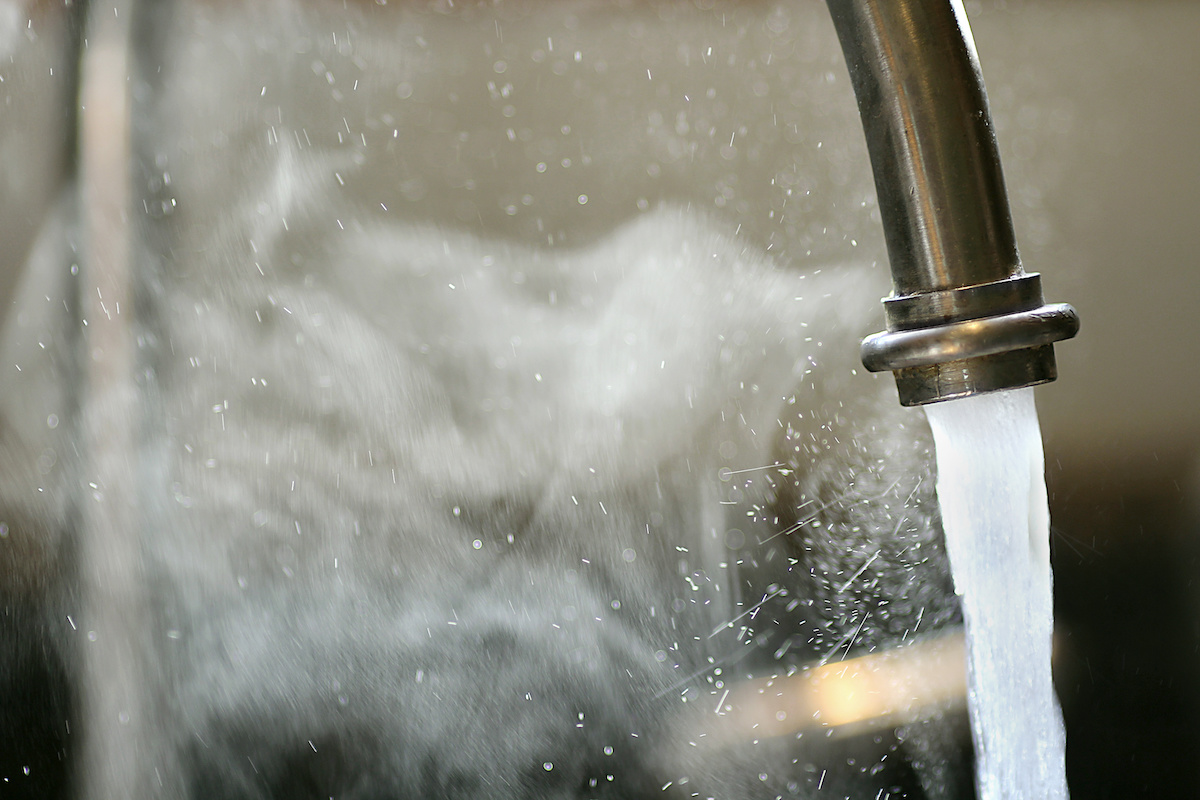Think about all the ways you use hot water in your house like laundry, dish washing, showers, or washing your hands. It’s not surprising that the water heater gets quite the workout. In fact, according to the U.S. Department of Energy, heating water is the second largest use of energy in the home, accounting for about 20% of total energy bills — that’s $400–$600 for the average household. Would you like to improve your water heater efficiency and keep more of that money in your own pocket? You’re in luck, we have a few tips to improve your water heater efficiency and reduce its energy consumption.
1. Turn Down the Hot Water Heater
First thing first, let’s turn it down. Did you know that most water heaters come set at 140 degrees? You can make a significant impact by lowering the temperature. The Department of Energy suggests 120 degrees, which can produce plenty of heat without affecting your lifestyle (the average shower temperature is only 106 degrees). It will also reduce the water heater’s energy use by up to 10%.
Adjusting the water heater is generally a relatively easy DIY task. Some water heaters have a built-in thermostat, and some just have a dial with generic settings like “hot” or “warm” or a red/blue color gradient. Consult your water heater owner’s manual for instructions on adjusting the thermostat on your model safely.
2. Drain & Clean the Tank
Water heaters are like any other mechanical device and need periodic maintenance. Draining the tank periodically is recommended by most manufacturers. Why? Sediment and crystalized minerals naturally accumulate in hot water tanks, affecting how fast and evenly they heat. Draining it once or twice a year is a preventative task that can help it to function normally, and it’s easy to do.
While you’ll want to consult the manual for your particular unit, the typical steps are to turn off the hot water heater and set the burner to “pilot” if it uses gas. Connect a hose to the spigot at the tank’s base and point the other end toward a drain or bucket, and then open the valve until water flows out. Once it’s drained, disconnect the hose and close everything back up.
3. Insulate the Water Pipes & Tank
A significant amount of heat escapes through the pipes and tank, making the hot water heater work harder than it has to. You can save energy by insulating your water storage tank and exposed piping. Best of all, it’s an easy DIY job. Get yourself some self-sealing sleeves from the home store for a few dollars and slip them over any exposed pipes.
“Should I insulate the water tank?” is a common question, and the answer is that newer hot water heaters won’t necessarily benefit from insulation. However, an insulating blanket on some older units can reduce heat loss by almost 50%. Check out this information from The Department of Energy for more information on water heater insulation.
4. Add a Timer
If you don’t mind adding a schedule to your hot water availability, you can add a timer to your hot water heater. The timer makes it so that instead of the hot water heater always being on and able to provide hot water at a moment’s notice, the tank runs on a timer. Even just setting it to turn off overnight while you’re asleep can reduce energy use.
Use Less Hot Water
In addition to making your water heater more energy-efficient, you can also reduce the amount of work it does and cut your energy usage by simply using less hot water with these tips.
- Wash your clothes in cold water, and make sure every wash is a full load.
- Limit your showers to four minutes or less. Turn the water off when using soap or shampoo — turn it back on when it’s time to rinse.
- Invest in low-flow showerheads and faucets. These can reduce hot water use up to 60%.
- Modern detergent can clean your dishes, even in cold water, so if your dishwasher has an economy setting, use it.
When It’s Time to Purchase a New Hot Water Heater
The average water heater lasts anywhere from ten to fifteen years. When it’s time to invest in a new hot water heater, make energy efficiency part of the criteria by which you choose a model. Look for the Energy Star logo to show that the hot water heater is certified and rated for efficiency.
Make sure that you also purchase a water heater that’s the right size for your needs. Too large will use more energy than necessary, and too small means the last person to get a shower will probably be unhappy.
If federal tax credit eligibility is a factor, heat pump water heaters may be eligible. Check out our blog post on more ways to qualify for a tax credit. Depending on your needs and budget, consider a tankless water heater that produces hot water as needed on-demand and offers significant efficiency improvements over tank hot water heaters.
Save Money on Electricity With Energy Texas
Improving the efficiency of your hot water heater is one way to save money on your energy costs. Investing in 100% renewable, fixed-rate electricity from Energy Texas is another. Straightforward plans, competitive pricing, and Tex-cellent customer service are just how we do it. Enter your zip code below and compare our rates to what you’re paying now with the other guys. We’d love to save you some money and earn your business!
